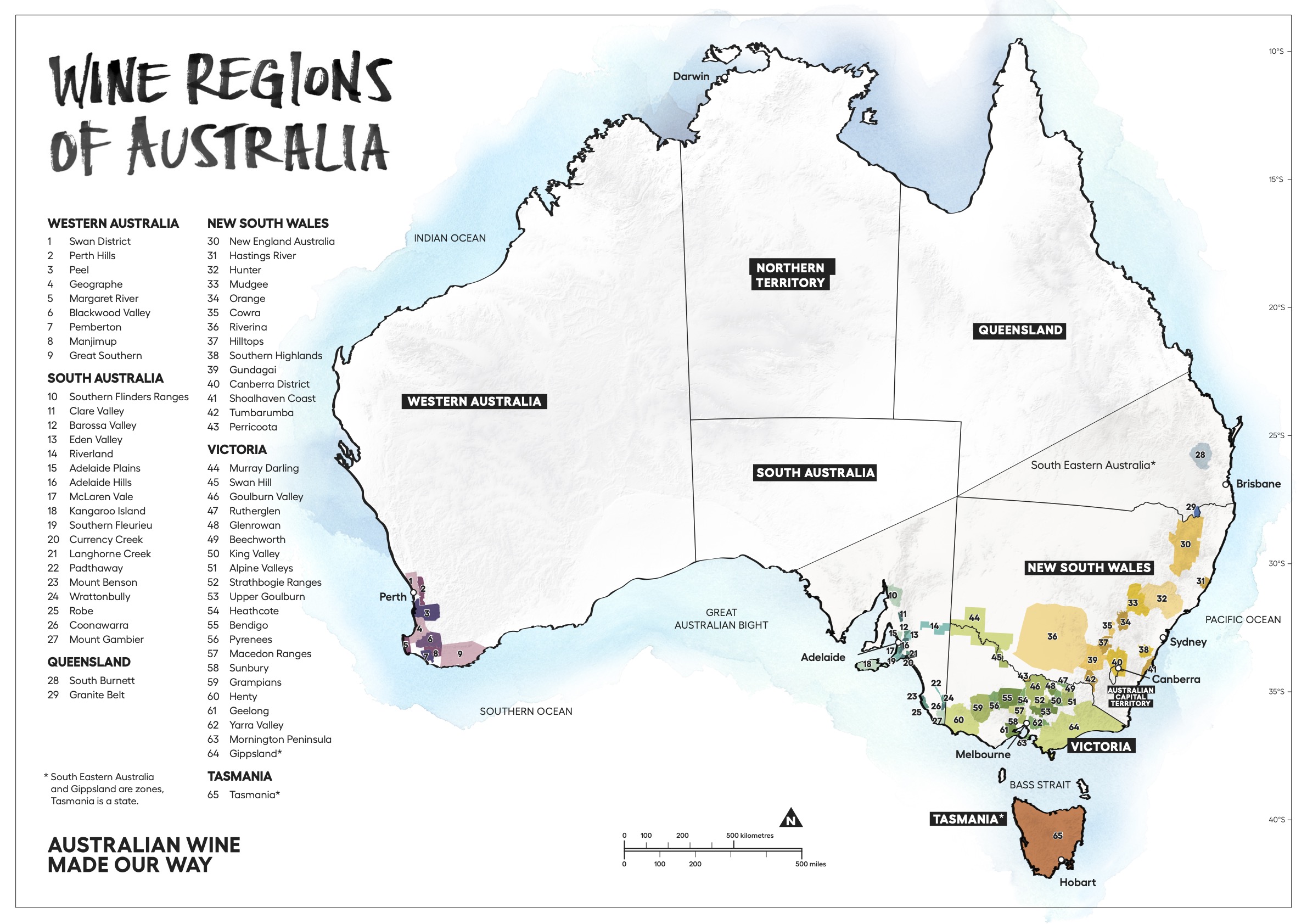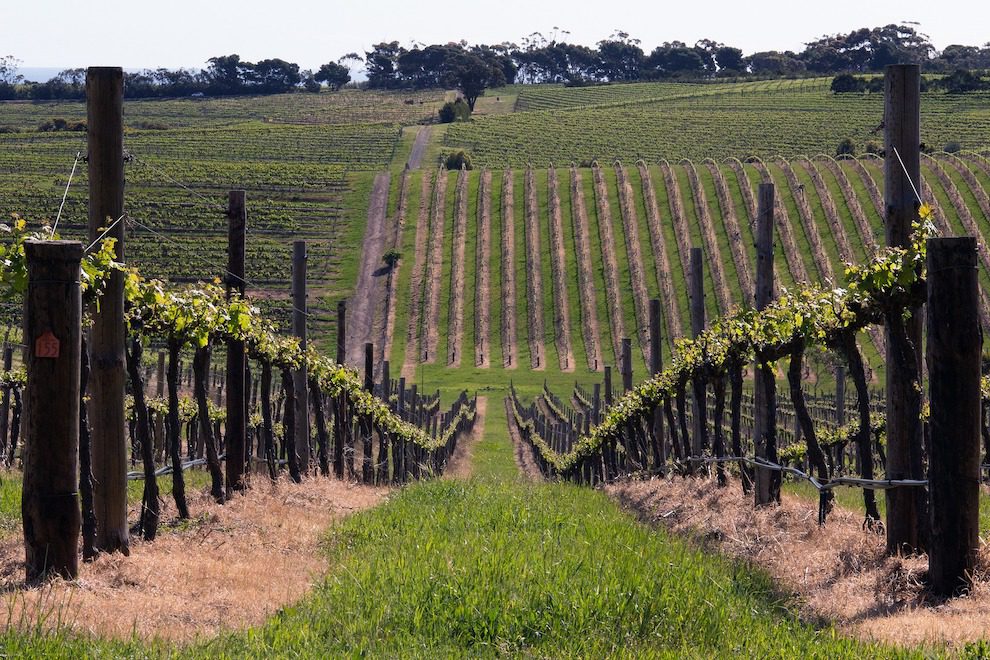In relation to country of origin, wines from Australia are arguably second only to Portuguese wines in terms of their availability in Macao. There are many factors contributing to the popularity of Australian wines around the globe. According to Wine Australia (an Australian government statutory authority on wines), Australia is the sixth largest country in the world in area. The nation has a huge wine industry but a relatively small population of only around 25 million. Thus, its wine sector is highly reliant on exports: about 60 percent of its total annual output is sold abroad, with exports valued annually at over US$2.2 billion.
Over the last few decades, Australian winemakers have been very aggressive in marketing and exporting their products to various parts of the globe: the country is now ranked as the world’s fifth largest wine exporter. In particular, Australian wines have successfully captured a sizeable share of the Greater China market in recent years. About 40 percent of Australia’s annual wine exports find their way to Chinese tables. Some of Australia’s most successful labels – such as Penfolds, Jacob’s Creek or Yellow Tail – have become household names among Chinese wine consumers.
As part of their business strategy, Australian winemakers tend to market wines to a range of price brackets. Penfolds’ entry-level wine Koonunga Hill retails in Macao at around only MOP70, whereas examples of its flagship Grange can be sold in Macao at over MOP5,000 per bottle. The price-bracketing strategy gives Australian winemakers a market advantage over competitors, being accessible to all levels of wine consumer. Moreover, the declining value of the Australian dollar (its value since 2013 has fallen by over 25 percent versus the United States dollar) also helps Australian winemakers in exporting their wines at competitive prices.
The success of Australian wines is not only about economics. Australian winemakers are renowned for offering consistent quality with little variation between vintages. This has to do with relatively stable climate conditions year after year, and Australia’s scientific approach to winemaking. Many wine lovers choose Australian wines as their ‘day-to-day’ option, as they offer exceptional value for money and are often ready to drink without the need for extended cellaring.
The easily comprehensible labelling also contributes to the popularity of Australian wines around the world. Labels are written in English, and almost all Australian wines clearly list the grape varieties used and the region of origin, often accompanied by a brief description of the wine and/or the winemaker’s tasting notes. This means that, for many international consumers, Australian wines are far more approachable than their ‘Old World’ counterparts such as French or Italian wines, that use labels not in English and follow complicated appellation and classification systems.
In addition, Australian winemakers are bound by far fewer laws related to winemaking than ‘Old World’ producers. Australians are also free from the weight of centuries-old traditions; they are adventurous and keen to explore new frontiers regarding winemaking techniques and marketing strategies.
 Although mostly famous for its reds, Australia has all sorts of wine styles to offer. Most wine consumers start their Australian wine journey with the basic reds or whites from the South Eastern Australia zone, which can be made from grapes grown across the states of Victoria and New South Wales, and parts respectively of Queensland and South Australia. Wines from this area usually represent good value for money, albeit bold and fruity but somewhat generic.
Although mostly famous for its reds, Australia has all sorts of wine styles to offer. Most wine consumers start their Australian wine journey with the basic reds or whites from the South Eastern Australia zone, which can be made from grapes grown across the states of Victoria and New South Wales, and parts respectively of Queensland and South Australia. Wines from this area usually represent good value for money, albeit bold and fruity but somewhat generic.
Probably the next step for a wine lover getting acquainted with Australian wines is to explore the South Australian zone. It features unique regions such as Barossa (for some of the most iconic red wines in Australia made with Shiraz) and McLaren Vale (look for their Grenache reds which are well suited to its Mediterranean-style climate), as well as Clare Valley and Eden Valley (their dry Riesling whites are known for clarity and precision).
For those more interested in white wines, there is also lots of ground to explore in Australia – including the mountainous Hunter Valley in New South Wales for its ageing-worthy Semillon, the cool-climate Yarra Valley in Victoria for its elegant Chardonnay, and the oceanic-climate Margaret River region in Western Australia for its Bordeaux-inspired Sauvignon Blanc and Semillon blend.
If seeking wines for a celebration, the island state of Tasmania is the place to go, for its traditional-method sparkling wines – just like the French do it in the Champagne region – using blends of Pinot Noir and Chardonnay grapes.
As there are so many affordable and quality offerings from Australia, there is no reason not to make it a daily celebration with Australian wines.
This month’s recommendation:

- Name of wine: Rockbare Adelaide Hills Chardonnay 2018
- Region/country of origin: Adelaide Hills, South Australia, Australia
- Grape variety: Chardonnay
- Price: MOP123
- Available at: Bevtech Ltd. (https://bevtechshop.com)
- Official product details: https://www.rockbare.com.au/#/wines/chardonnay
- Tasting notes from the producer: Aroma of citrus blossom, subtle white nectarine and green mango with a slight hint of creamy cashew. A pleasant palate of citrus fruits, nectarine, green mango and honeydew melon with gentle ginger spice and a slightly creamy finish.
- The verdict: Australian Chardonnay is often stereotyped as a fuller-bodied type, with overripe fruits in a toasty buttery style – this wine is anything but that. Grapes are sourced from the Adelaide Hills region: this cool-climate area is highly suited to create a finer style of Chardonnay echoing those in the Burgundy region of France. This food-friendly wine is finely structured with medium acidity and slight creaminess, and it can go well with many classic Cantonese dishes (think lobster with E-fu noodles braised in stock1, “Har Gow”2 steamed shrimp dumplings or Cantonese fried whole chicken3). You cannot go wrong either by pairing this wine with some Western-style casual meals such as grilled chicken sandwich, or fish and chips with tartar sauce. This South Australian wine has a finesse that is rarely found in a Chardonnay at this price point regardless of its country of origin.
1In Chinese: 上湯焗龍蝦伊麵
2In Chinese: 蝦餃
3In Chinese: 炸子雞
By Mr. Oscar Man Cheng Ho
IFTM Lecturer in Wine Studies
WSET (Level 3) Qualification
Mr. Ho has since an early age been immersed in – and fascinated by – the world of wines. As a child, he was frequently to be found at his family’s restaurant, one of the city’s oldest establishments serving Portuguese fare and, of course, wine. It was only natural that his first job was in the wine trade. Mr. Ho joined IFTM as a lecturer in 2005 and has latterly taught wine-related courses. He also provides training and support to the student-led IFTM Wine Appreciation Club.









